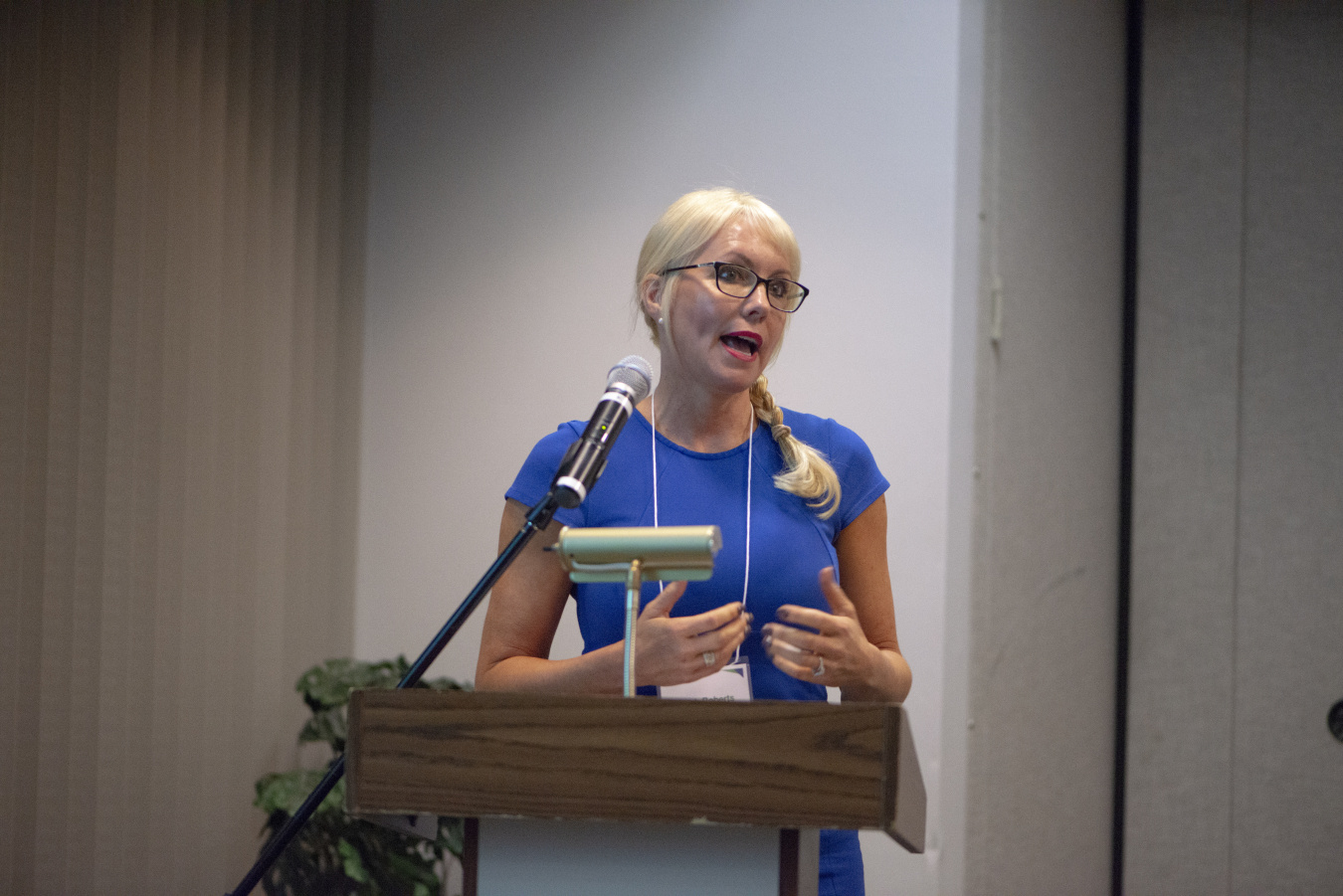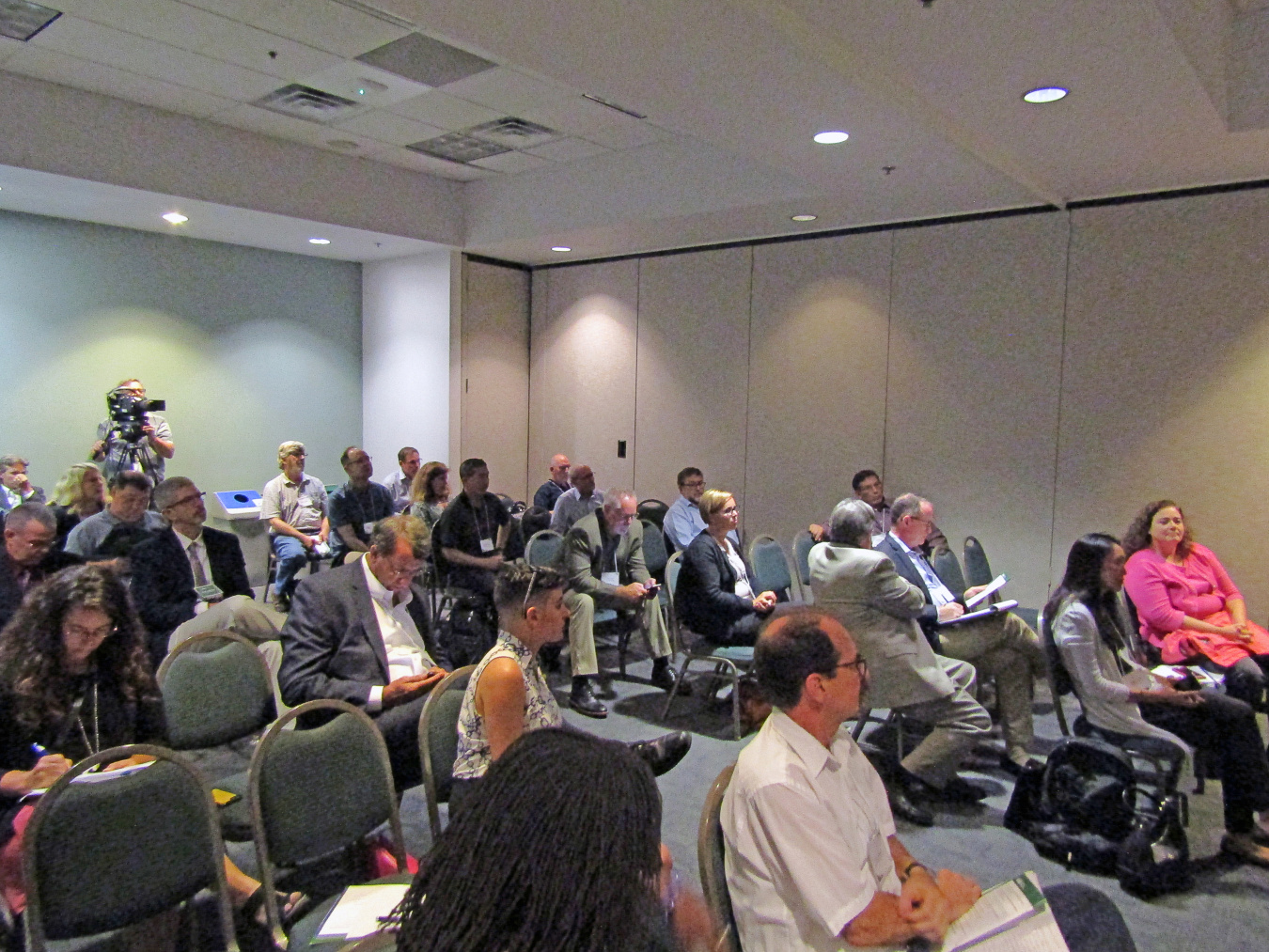Maintaining Continuity of Stewardship while Transitioning from Cleanup to Stewardship and Beyond
September 28, 20182018 LONG-TERM STEWARDSHIP (LTS) CONFERENCE
Regulator Perspectives on Site Long-Term Stewardship
- Jeffrey Murl, LM (Moderator)
- John Price, State of Washington, Department of Ecology – Integrating Long-Term Stewardship with Hanford’s Ongoing Cleanup
- Lindsay Masters, Colorado Department of Public Health and Environment – Colorado’s Institutional Controls: A Long-Term Stewardship Tool
- Sarah Roberts, Oak Ridge Associated Universities – Requirements for Independent Verification at DOE Sites
- Dominick Orlando, NRC – U.S. Nuclear Regulatory Commission’s Role in the Management of UMTRCA Sites
Regulators emphasized the importance of their roles within their organizations, as well as the tools and techniques used to support long-term stewardship. Jeffrey Murl emphasized that understanding regulator perspectives at the earliest stages of stewardship planning is important for a project’s success.
The biggest challenge at the Hanford, Washington, Site is the ongoing cleanup predicted to continue for more than 100 years. However, the extensive length of cleanup allows the convenience of having an active Comprehensive Environmental Response, Compensation, and Liability Act (CERCLA) disposal cell. The efforts to leverage resources used for cleanup on non-long-term stewardship areas of the site resulted in cost savings and faster cleanup, as opposed to treating these areas independently.
“So if there are ongoing issues in the long-term stewardship area, the CERCLA disposal cell is going to be a very convenient way to deal with them,” said John Price. “That is our end goal on long-term stewardship.”
The value of institutional controls was discussed from the perspective of the Colorado Department of Public Health and Environment. The heart of the discussion centered on the preference for either an environmental covenant or a restrictive notice (RN) within the state of Colorado. The state of Colorado has a strong RN preference, as it is an expressly state police power-based tool, not property based. “This avoids the property issue of disposal of property by the United States,” Lindsay Masters said. “It also answers the question of whether or not we have power over those prior recorded interests, those potential third parties.”
As stated in DOE Order 458.1, Radiation Protection of the Public and the Environment, “Independent verification (IV) must be performed by DOE personnel not directly involved in the specific clearance action or by a contractor who is independent of the contractor conducting clearance activities … ” IV should not be viewed as “one size fits all.” One of the major objectives of DOE Order 458.1 is to allow for a “graded approach” for flexibility in application for property clearance. The graded approach to IV must be commensurate with the scope, complexity, and risk associated with the clearance action to ensure at a minimum that procedures, instruments, data, analysis, and documentation are adequate.
“The ultimate safety of the sites is of great concern,” said Sarah Roberts. “We have heard a lot about that this week. What’s most important is that those final site conditions have been verified to be safe for public or restricted use. That is the ultimate goal of independent verification.”
The two regulations that take precedence in the NRC role in legacy management stewardship are the National Environmental Policy Act of 1970 and the Uranium Mill Tailings Radiation Control Act of 1978 (UMTRCA). When remediation at UMTRCA sites is complete, and sites are transferred to DOE, NRC provides oversight of DOE’s long-term surveillance and maintenance of the sites. NRC, along with other federal organizations, have joint, supporting roles in the “Five-Year Plan to Address Uranium Contamination on the Navajo Nation.” In addition, NRC is making efforts to promote cooperation and communication between NRC and Tribal governments.

Sarah Roberts discusses what is behind independent verification of DOE sites.
Site Transitions, Reducing Costs, Minimizing Waste, and Exit Strategies
- Darina Castillo, LM (Moderator)
- Peter McKereghan, Lawrence Livermore National Laboratory – Enhanced Source Area Remediation Studies, Reducing Long-Term Cleanup Costs and Minimization of Waste
- Ann Ewy, U.S. Army Corps of Engineers (USACE) – Vicinity Property Assessments at Formerly Utilized Sites Remedial Action Program (FUSRAP) Sites
- Josephine Wade, USACE – Hazelwood Interim Storage Site/Futura Coatings Company (HISS/Futura/Latty) FUSRAP
- Mike Truex, Pacific Northwest National Laboratory – Analysis Tools that Support Remedy Exit Strategies and Transition to Long-Term Stewardship
Presenters discussed area remediation studies and vicinity property assessments, shared ideas on how to reduce long-term cleanup costs, and demonstrated new data analytic tools support exit strategies and site transition.
Peter McKereghan gave an overview of new technologies being used to advance the long-term cleanup process at its gasoline field site. By re-injecting nutrients and microbes into groundwater, they are able to destroy volatile organic compounds in situ.
“We are continually battling the anaerobic conditions,” said McKereghan. “It’s a challenge but hopefully we will see a continuing success there.”
Significant changes in the FUSRAP have occurred in the past 40 years. Vicinity property evaluations are required to closeout and delist sites, and for project transfers to LM.
“Our ultimate goal is to release a site to LM,” said Ann Ewy. “We need to make sure that when we are done, we meet today’s industry standard.”
All of the presenters expressed transitions of sites to long-term stewardship as a priority. “What we are going to do is to make sure that these properties remain protected into the future,” said Josephine Wade.
“Transitioning sites from the clean-up phase performed by one agency to long-term stewardship performed by another agency is a process including many steps to assure preservation of records, public access to information, maintenance of land-use controls, and enabling the site for beneficial reuse,” said Murl. “The process demands efficient interaction between the transferring and the accepting agencies.”
Advances in web-based programming tools have helped the Pacific Northwest National Laboratory develop a suite of comprehensive rapid analysis tools for environmental sites. The program, SOCRATES, delivers consistent data that is easier to use and analyze.
“We need to understand how to analyze data so that we know how to set goals,” said Mike Truex. “Then, we can move into long-term management using that data.”
“What stood out most about both the conference and the track session was the cross section of organizations that support the LTS mission in a variety of ways; either by evaluating data, performing sampling, or ensuring compliance. We are all working toward the same mission,” said Darina Castillo.

Conference breakout sessions were well attended and highly interactive.

